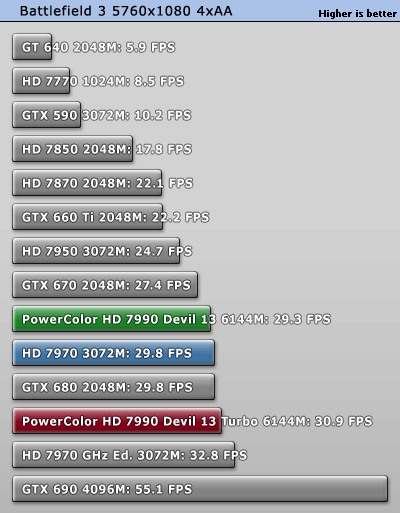Here is Sniper Elite V2 with super sampling disabled and the rest of the settings at max.
http://www.techpowerup.com/reviews/Sapphire/HD_7970_Toxic_6_GB/18.html
xbitlabs tests with and without anti-aliasing. Without anti-aliasing the scores are quite similar to techpowerup.
http://www.xbitlabs.com/articles/graphics/display/radeon-hd-7970-ghz-edition_8.html#sect5
At 1600p without antialiasing a 1.25 Ghz HD 7970 is close to 30% faster than GTX 680 boosting to close to 1.3 Ghz speeds.
Sniper Elite V2 uses DirectX 11 tessellation, contact hardening shadows, DirectCompute-based effects like DOF, HDR bloom, and super sampling anti-aliasing.
http://www.rage3d.com/articles/gaming/sniperelitev2/
The fact is compute performance is Tahiti's strength and as more and more games are using compute shaders for complex lighting and special effects. Also when you go for 4x SSAA (xbitlabs uses ultra profile with max settings 4x SSAA) the bandwidth of the HD 7900 cards really shows the huge difference in capabilitiy because of a design choice.
Dirt Showdown, Sniper Elite V2, Sleeping Dogs are games where the compute and bandwidth performance is making a difference. For people complaining that these cards perform poorly on Nvidia because they are designed in such a way it will be known when the GTX 780 launches. With a focus on compute performance and with huge bandwidth if the GTX 780 performs much better and competes with HD 8970 in these same games than all these arguments are going to be proven as lame excuses.





